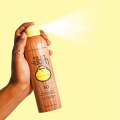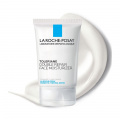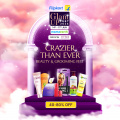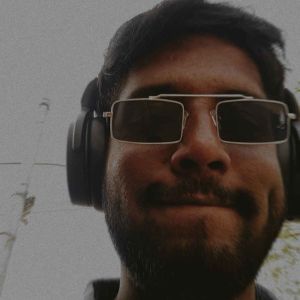What is MLB’s PED Policy? All you need to know
MLB has been very strict with its PED Policy. Now with Orelvis Martinez getting suspended, fans want to know more about the MLB PED Policy.
![Ronald Acuna Jr [Credit-Instagram@ronaldacunajr13] Ronald Acuna Jr [Credit-Instagram@ronaldacunajr13]](https://www.pinkvilla.com/images/2024-06/1082973790_ronald-acuna-jr-credit-instagramronaldacunajr13.jpg)
Trigger Warning: This article contains references to alcohol and drug addiction
Orelvis Martinez, a Toronto Blue Jays infielder, was banned for 80 games on Sunday for violating Major League Baseball's performance-enhancing drug rules, just two days after making his major league debut.
Martinez, 22, is the Blue Jays' best-hitting prospect and was promoted last week when shortstop Bo Bichette went on the disabled list. Martinez tested positive for clomiphene, a fertility medicine on the league's prohibited substances list.
After this incident, many MLB fans seemed to want to know more about the MLB PED Policy. So, here we are with all the necessary details.
When was the MLB PED policy started?
Steroid testing was not a serious concern during Major League Baseball's existence. Commissioner Fay Vincent delivered a message to all teams in 1991 informing them that steroid usage was prohibited, but no official rule change occurred. The 1991 memo did not prohibit the use of steroids. MLB banned steroids in 2005, followed by HGH in 2011.
Following the BALCO controversy, which alleged that prominent baseball players had used illicit performance-enhancing substances, Major League Baseball outlawed steroids. At the start of the 2005 season, Major League Baseball players and owners adopted the policy to ban these substances.
What does the MLB PED policy state?
According to the policy, no player may use, possess, sell, facilitate the sale of, distribute, or facilitate the distribution of any drug of abuse, human growth hormone (HGH), or steroid. Any and all medications or substances classified in Schedule II of the Controlled Substances Act are considered drugs of abuse under the Program.
MLB has granted players a "Therapeutic Use Exemption" to continue utilizing their prescribed medicine.
Prohibited Substances may only be added to the list by a unanimous decision of HPAC; however, the federal government's inclusion of a substance to Schedule I, II, or III will automatically result in that substance being added to the list.
How does the testing work?
Testing for drugs of abuse is not done at random, but rather based on reasonable cause. If one of the HPAC panel members discovers proof that a player has used, owned, or sold illegal drugs during the last 12 months, they convene a conference to review the information with the other members.
If there is a majority vote to test the suspected player, testing will begin no later than 48 hours. Natural cannabinoids (e.g., THC, hashish, and marijuana), synthetic THC and cannabimimetic (e.g., K2 and Spice), cocaine, LSD, opiates (e.g., oxycodone, heroin, codeine, and morphine), MDMA (ecstasy), GHB, and phencyclidine (PCP) are examples of abused drugs.
What happens when a player fails to comply with the policies?
- First positive test result: 80-game suspension
- Second positive test result: 162-game suspension (the whole season, including the postseason).
- Third positive test result: lifetime suspension from MLB.
- Every suspension is without pay. Additionally, a suspended player may be replaced on the active roster by another player. A player's ban is served while on the injured list. A banned player is unable to compete in that year's postseason unless his punishment is reduced on appeal, even if it ends earlier.
- Players who test positive for either their first or second tests are given the option of appealing, during which scientific testing will be done to confirm the legitimacy of the test. During that time, they are prohibited from participating in any baseball activities. If an appeal is successful, the punishment can be reduced by 40 games for the first offense and 80 games for the second offense. The postseason prohibition was also lifted. There is no appeal for a third offense.
- Players who get a lifetime ban after a third positive test may seek reinstatement after one year, and they will be eligible after two years. On February 12, 2016, Jenrry Mejía became the sole player permanently banned under the doping policy.
Also Read: 5 Luckiest Plays In MLB History





 JOIN OUR WHATSAPP CHANNEL
JOIN OUR WHATSAPP CHANNEL


































































































